Shimano’s SLX mountain bike groupset is the workhorse of its range, at times overlooked by the budget Deore groups and near-as-dammit-to-XTR XT groupset.
However, the SLX range of products has plenty of pricier features in a slightly more muted package, just missing out on the full spec list, but still performs admirably.
Shimano SLX M7120 disc brakes detail
The brake lever is held on the bar by a top-loading hinged clamp. It requires a 2mm Allen key to unlock the clamp, but the bolt is captive thanks to a rubber grommet, and being top-loaded means that with the clamp locked together, dropping the bolt into the threads is nice and easy.
However, the locking pin is a little annoying in reality. It can be stiff and another Allen key needs to be used when fitting and removing the levers, with little actual improvement in functionality.
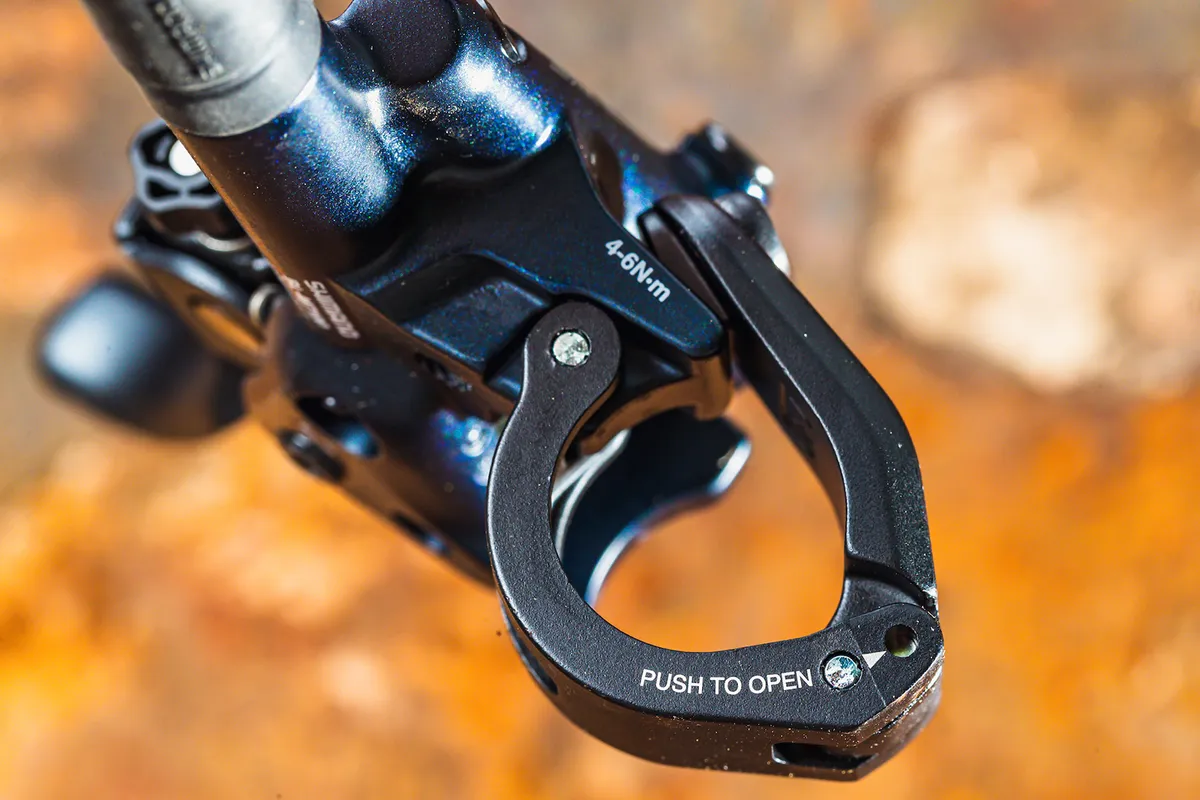
The lever gets the latest architecture, whereby the clamp is set further back along the reservoir and there’s a little support between the lever pivot and bar, which helps prevent lever flex under heavy braking.
It’s a neat touch that is effective, but obviously takes up more real estate on the bar than a single clamp would.
However, with Shimano’s I-Spec shifter and dropper mounting option (as well as aftermarket adaptors), it's possible to run a broad range of shifters and dropper remotes while still maintaining a clean cockpit.
The two-finger lever is 70mm from pivot to tip, but with a well-upturned end, fingers are held securely on the lever. It has tool-free reach adjustment, but there’s only a blanked-off bite point port (or Freestroke in Shimano parlance) – no adjustment possible here.
The lever gets Shimano’s ServoWave technology – a link in the lever pivot that gives more piston movement in the early part of the stroke than later. This means the wide-spaced pads contact the disc quickly, despite having plenty of room for mud, and power later on is better modulated and easier to achieve.
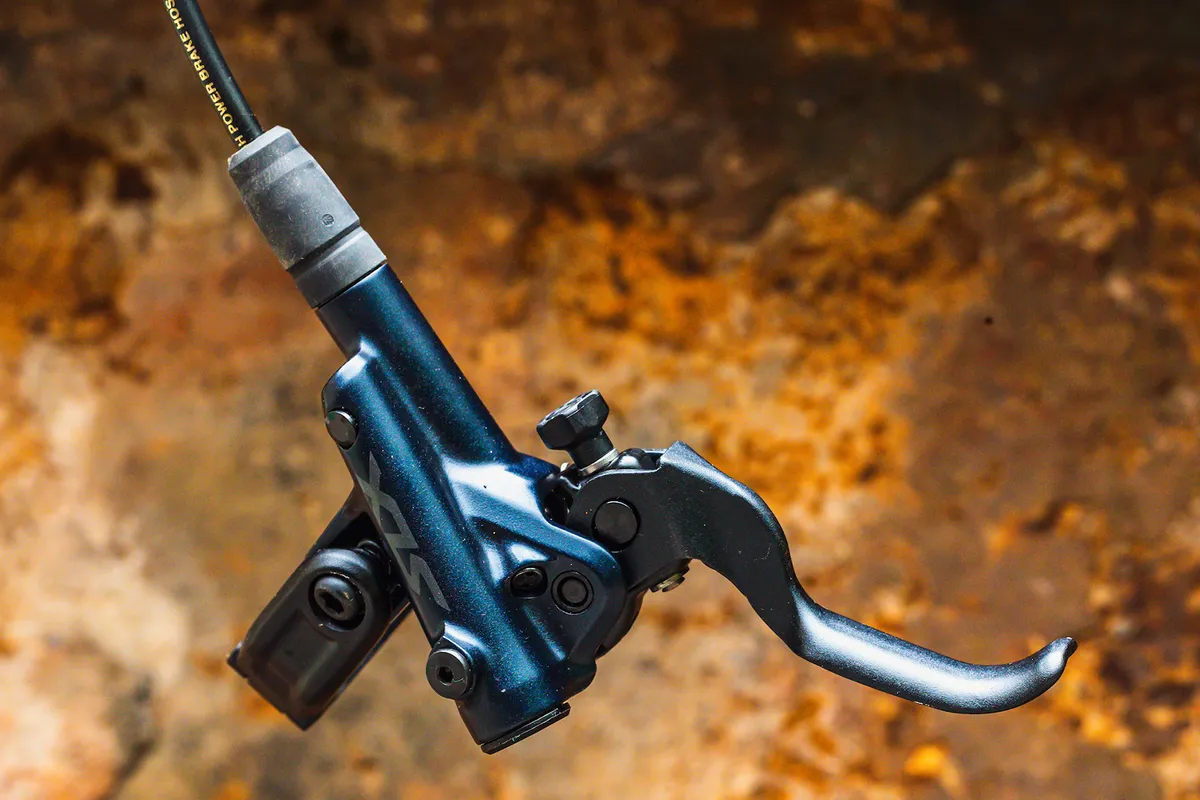
Hose lengths are good, 1,000mm for the front brake and 1,900mm for the rear, down to the adjustable banjo on the caliper, which allows for better cable routing on tight cable runs in the rear triangle. There shouldn’t be any issues on long enduro bikes.
The two-piece caliper holds a pair of long brake pads. The stock pads are non-finned organic (or resin) types, though sintered versions and those with heat dissipating fins are also offered, which I have here. The pad is held by a threaded pin with a split pin securing it.
Using Shimano’s pot and syringe method, I was able to get a good bleed first time. However, the paper instructions aren’t super clear because they cover a range of bleed options, but there are plenty of guides online to make life easier.
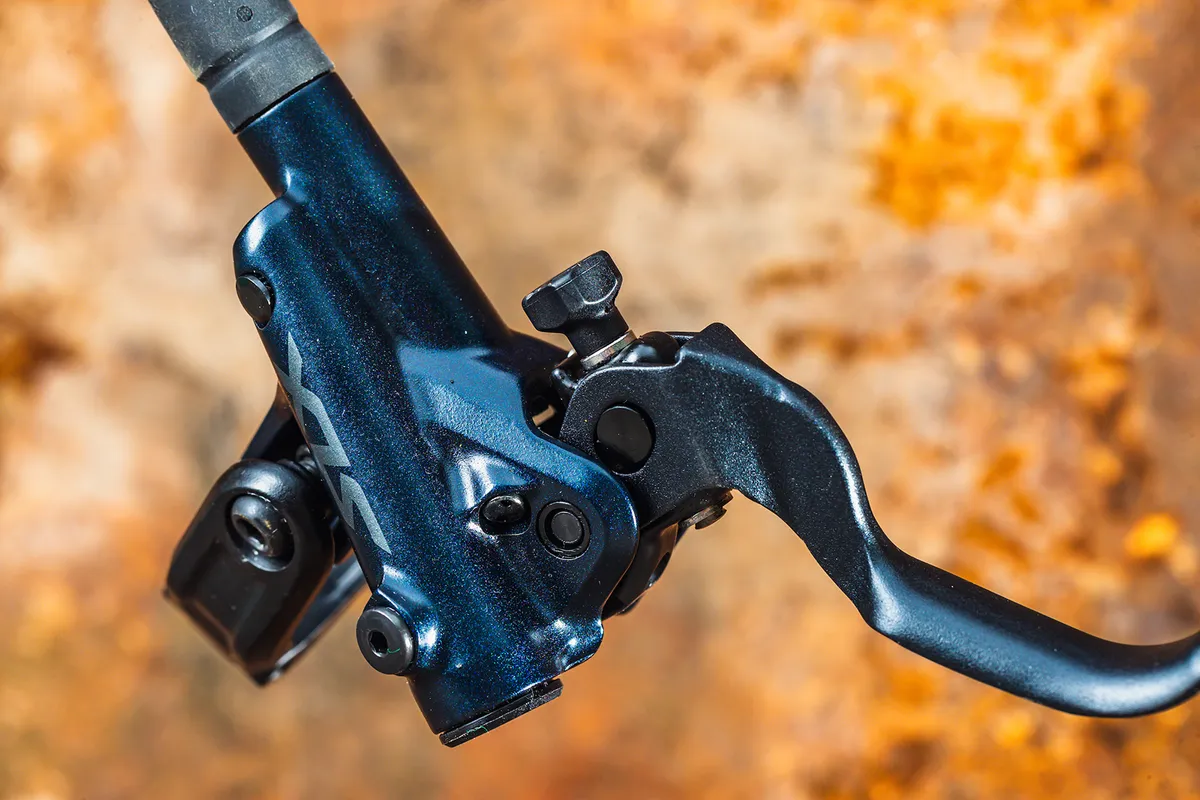
The brakes arrive with the hose not connected to the lever – the hose has a rubber cap over the end and the lever has a bung in place.
Connecting them is very simple, requiring an 8mm spanner, and with fluid already in the system, a bleed may not be necessary – so long as you’re careful and you’re not cutting the hose.
It’s worth noting that the bleed nipple on the caliper requires a 7mm spanner, not something many DIY spanner kits come with as standard in my experience.
Shimano SLX M7120 disc brakes performance
As I often find with Shimano’s four-pot brakes, power is excellent. I’ve ridden these brakes on heavy longer-travel ebikes and haven’t found them lacking, and with their added heat-proofing, via the finned pads, they've been consistent performers so long as the bleed has been good.
The bleed does seem to be critical. It is easy to achieve with the correct procedure and really helps give the brakes a consistent performance.
Over the past few years, we’ve experienced problems with inconsistent bite points on Shimano’s SLX/XT/XTR brakes, however this particular test brake didn't suffer from this during testing and, on balance, it feels like these issues are becoming less common.
The initial bite from the SLX brakes is very sharp. If you’re coming to the brakes from a set of SRAM or Formula stoppers, you’ll notice the immediacy with which power is applied to the front tyre. This brake feel splits opinion, but gives you plenty of confidence that it's working.
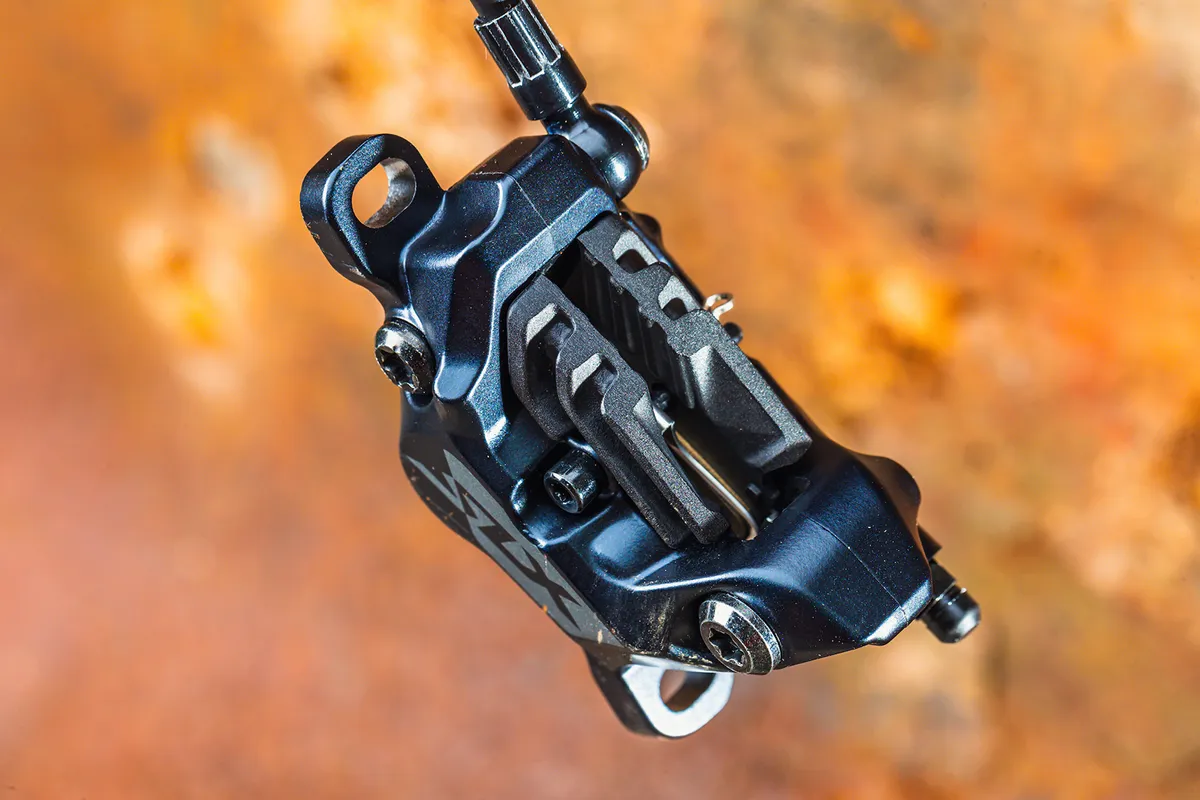
Fortunately, once the brakes are applied, power is easily controlled, though the usable throw of the lever from initial contact to full power is less than on other brakes. As such, it arguably takes a bit more finesse to properly apply small changes in braking power.
The added support for the lever body is a good touch, so long as you can manage the room on your bar. With the sharp initial bite and a non-flexing lever, the brakes have a really assured, firm feel under the finger.
The sintered pads seem to last well in my experience and remain fairly quiet. I’ve found that with a hint of warmth in them, performance improves again, with the second or third set of stops better than the first.
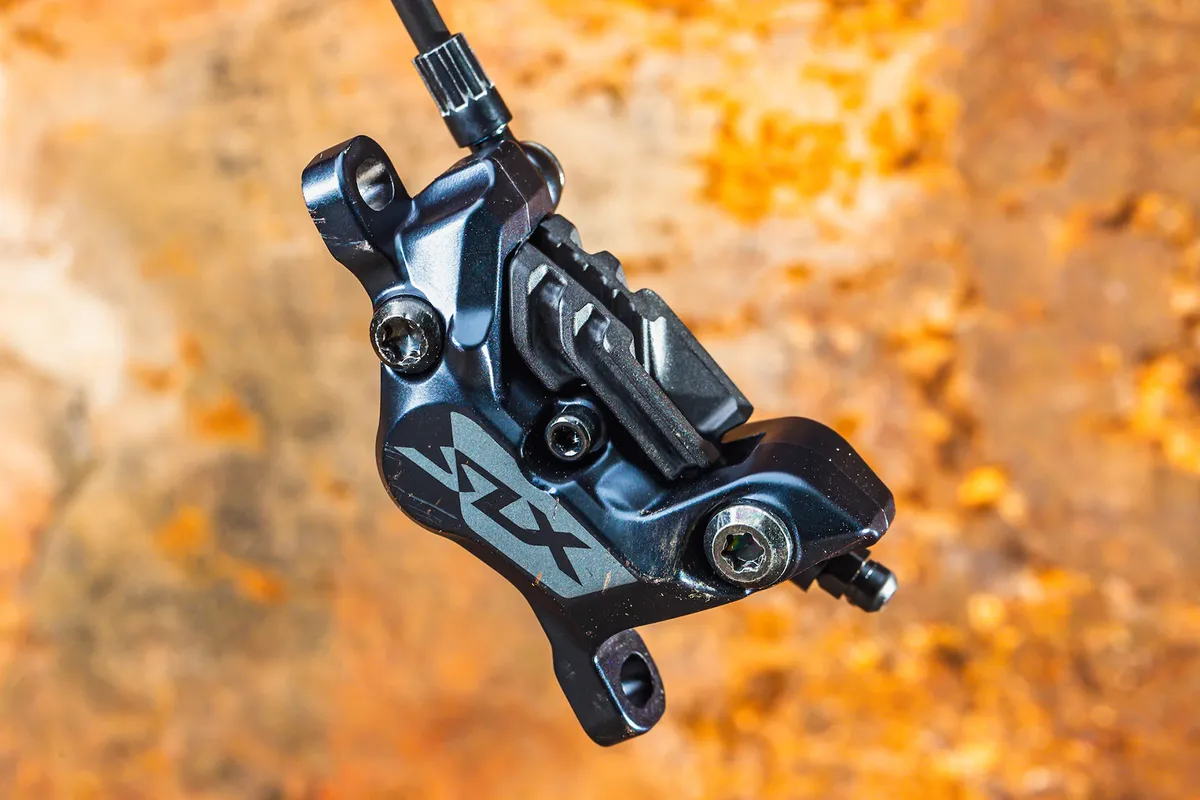
The added mass of the cooling fins can make them rattle, especially when the pads are a touch worn. It can take a couple of rides to work out where the rattle is coming from and is a bit annoying when it's present.
The SLX brakes have slightly less functionality than the XTR brakes I’ve also tested – namely the lack of Freestroke adjustment – however, I can’t say I missed this. They are around 70g heavier as a pair than the XTR brakes, so not a huge amount.
Shimano SLX M7120 disc brakes bottom line
The SLX brakes have Shimano’s trademark digital feel, and are super-positive when squeezing the lever. There’s ample power on offer and reasonable control if you’re happy to make micro-adjustments to the brake lever’s position as you go.
How we tested
We rounded up 12 powerful hydraulic brakes to find out which are the ultimate speed-scrubbers.
To get to know what it’s like to live with these brakes, we asked the brands to send us their official bleed kit, then trimmed the hoses to our ideal length.
As such, we’ve cut and bled every set we tested to see just how easy they are to maintain. Then we saddled up to see how they performed on the trails.
Overall braking power is important, but so too is the ease with which you’re able to access that power – if you have to squeeze the lever really hard, that’s likely to lead to arm pump. Brake ‘feel’ is another key aspect – it’s subjective, but some people like a really grabby feel, while others prefer the power to progressively build as you squeeze the lever. We also needed to work out just how powerful the brakes are, and how resistant to heat build-up.
So, with the help of both leg power and some electrical assistance, we took them to the top of some of the South West’s steepest slopes and pointed our bikes downhill to see how these 12 stoppers coped.
Note: Weights and prices are for a single brake (caliper, hose and lever, but no rotor or adaptor, unless otherwise stated).
Also on test
- Clarks M2 Disc Brake
- Formula Cura disc brakes
- Hope Tech 3 V4 disc brakes
- Magura MT Trail SL disc brakes
- Magura MT5 disc brakes
- Shimano BL-MT501/MT520 disc brakes
- Shimano XTR Trail disc brakes
- SRAM Code RSC disc brakes
- SRAM G2 Ultimate disc brakes
- Tektro HD-M285 disc brakes
- TRP Slate T4 Evo disc brakes
Product
| Brand | Shimano |
| Price | £160.00, $180.00 |
| Weight | 627g |
Features
| Brake type | hydraulic_disc |
| Features | Pistons: 4 Fluid: Mineral oil Weight: 307g (f) 320g (r) Details: Hinged lever clamp; I-Spec II ready |
| Adjustment | Reach (TF) |
